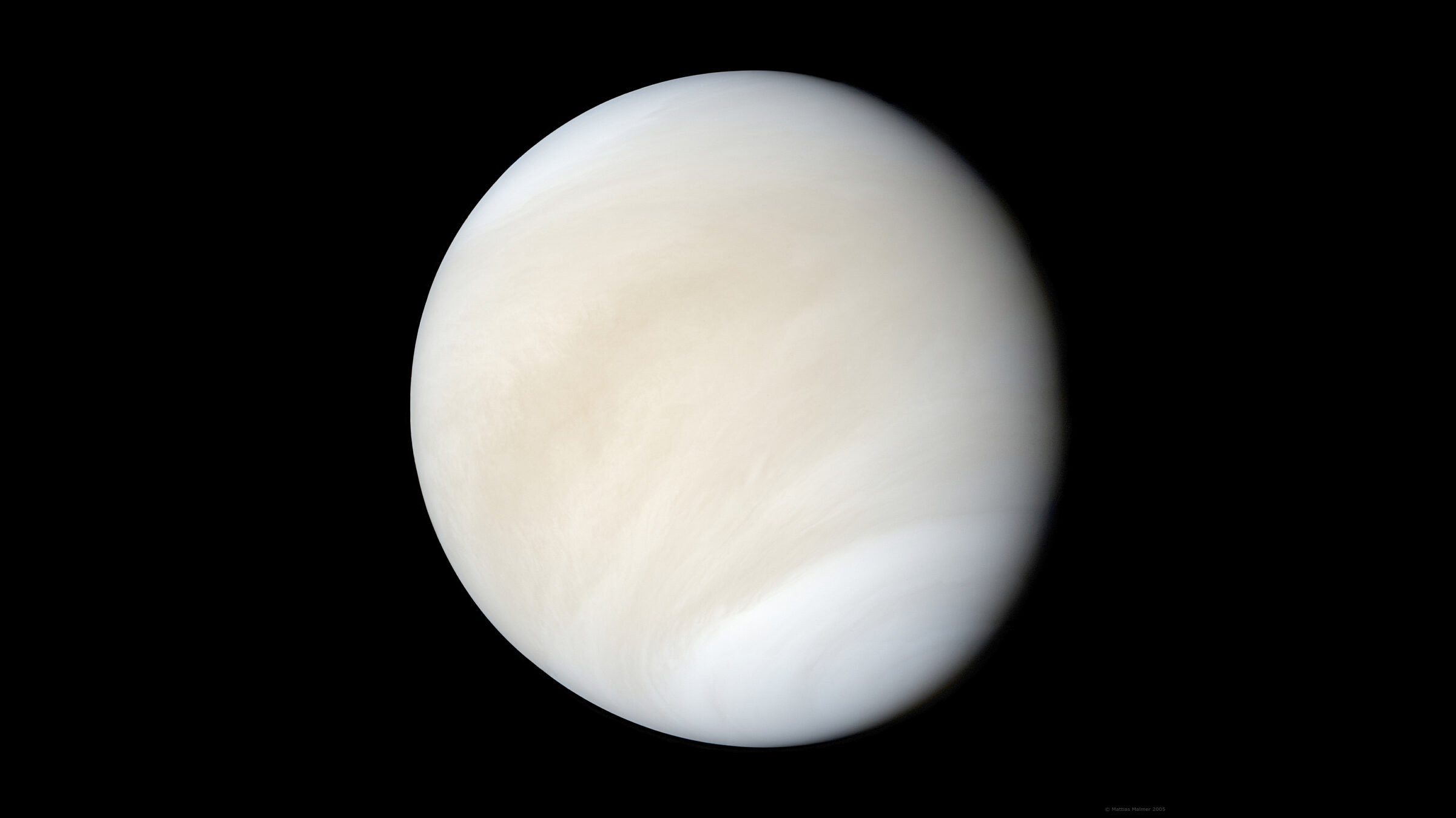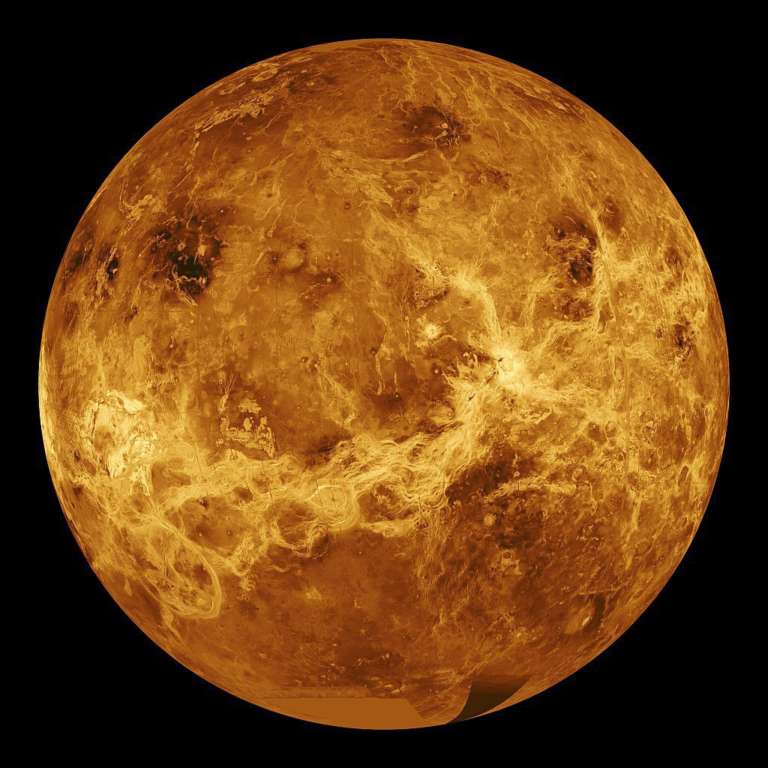Andrew Jones • Nov 08, 2022
VOICE: Will this Chinese candidate mission to Venus fly?
China has expanded its plans for deep space exploration in recent years, with a series of lunar and Martian missions as well as planned expeditions to near-Earth asteroids, comets, and Jupiter. Yet, the country has not ventured much inside Earth's orbit*. However, that could be about to change with a compelling proposal for a Venus orbiter put together by a team competing for funding from the Chinese Academy of Sciences (CAS).
The Venus Volcano Imaging and Climate Explorer (VOICE) proposal is being led by Dong Xiaolong of the National Space Science Center (NSSC) under CAS. A presentation by Dong at the Europlanet Science Congress 2022 in Spain in September revealed that the mission plans to probe Venus' geological and thermal evolution, investigate atmospheric thermal-chemical processes, how the surface and atmosphere interact, and potential habitability.
The orbiter would have a three-to-four-year primary mission carrying three main science payloads: a Microwave Radiometric Sounder (MRS), Polarimetric Synthetic Aperture Radar (PolSAR), and Ultraviolet-Visible-Near Infrared Multispectral Imager (UVN-MSI). It would aim to study in and below the clouds, image portions of the Venusian surface with meter-scale resolution, and search the clouds for potentially habitable areas and even biosignatures.

From Venusian hotspots to habitability
Particular points of interest include looking for "hot spots" on Venus' surface and potentially current active volcanoes. The MRS instrument would, among its tasks, be on the lookout for the molecule phosphine — which could be a biosignature — the potential presence of which in Venus’ clouds has been the center of excitement and controversy in the last couple of years.
Chinese interest in Venus is no surprise. Venus may have had oceans and been habitable to life, even within the last billion years, before becoming inhospitable, with that process not fully understood. Now, after years in the space exploration wilderness, the already-searing Venus is hot once more. NASA aims to send its VERITAS mission to the planet in the early 2030s and its DAVINCI mission late this decade, with ESA developing the EnVision mission.
Notably though, VOICE could reach our Earth-sized neighbor before any of these missions, with a proposed launch in June 2026, entering orbit around Venus in December. It would use aerobraking to lower an initially highly elliptical orbit to a circular, 300-kilometer altitude (186-mile altitude) orbit and begin its science observations in April 2027.
But VOICE would aim to do more than get there before many of the new wave of missions. Paul Byrne, an associate professor of Earth and planetary science at Washington University in St. Louis, said the mission could yield valuable insights.
“It looks to me like the mission will provide a major contribution to our study of Venus by acquiring radar data at high resolution for parts of the surface that EnVision won't investigate,” he said. “Together with EnVision, VOICE could then build on the global but somewhat lower resolution data we'll get from VERITAS. That combination of three missions will be potent.”
Furthermore, the polarimetric SAR data from VOICE will help us “understand where and to what extent various parts of the Venus surface are covered by sediments, for example,” Byrne added.
“Neither Magellan, VERITAS, nor EnVision carried or will carry a fully polarimetric radar, so that's an exciting contribution to our toolkit for studying Venus.”
The submillimeter sounder will be able to provide extremely precise measurements of different gas species, Byrne noted, which will also be valuable for gauging any changes in amounts over time. Other aspects of interest that the VOICE could touch on are looking for previously undetected molecules in the atmosphere and looking for evidence of ancient fluvial features.

Will VOICE be selected?
For now, VOICE has yet to be approved. The mission is among 13 finalists in the Strategic Priority Program on Space Science III (SPP-III), or “New Horizons Program” for implementation across 2025-2030. More specifically, VOICE is up against three other proposals in the “Planetary and Earth Science” section of SPP III.
From the 13 candidates, an expert panel will select five to seven missions from space astronomy and astrophysics, exoplanets, heliophysics, and planetary and Earth science. That selection process could be completed before the end of the year at the earliest.
There are positive signs for VOICE in this process. The detailed presentations and defined payloads suggest that the proposal is advanced, has a high level of technological readiness, and promises a significant scientific return.
CAS’s previous two Strategic Priority Program rounds, which started early in the 2010s, have focused on disparate and, to some extent, standalone missions. These have targeted major science objectives related to dark matter, quantum communications, using space observatories for high-energy physics, heliophysics, and the electromagnetic counterparts to gravitational waves.
But SPP III is expanding its scope to include planetary science among other defined areas. The three other proposals in the Planetary and Earth Science section are the E-type Asteroid Sample Return Mission (ASR), the Climate and Atmospheric Components Exploring Satellites (CACES) and the Ocean Surface Current multiscale Observation Mission (OSCOM) proposals.
ASR proposes visiting the roughly 600-meter wide (1,969-foot wide) near-Earth asteroid 1989 ML and collecting samples from as many as three sites and returning to Earth after a four-year expedition. 1989 ML is determined to be an E-type asteroid, which are characterized by having iron-poor surfaces and thought to have formed deep within the mantle of a differentiated parent body, then blasted apart by a cataclysmic impact.
Careful investigation of the returned samples could reveal clues about the conditions in the very early days of the inner Solar System and shed further light on the formation of the Solar System through comparison with samples acquired from the C-type asteroids Ryugu and Bennu, both thought to have formed in the outer Solar System.
Toward Chinese medium-class missions
Other proposals under SPP III battling for approval include a pair of exoplanet-hunting space telescopes: the astrometric Closeby Habitable Exoplanet Survey (CHES) and the photometric Earth 2.0 (ET) missions. Among four candidates in the Space Astronomy and Astrophysics section is Discovering the Sky at the Longest wavelength (DSL). It proposes sending a small constellation of satellites into lunar orbit and using the Moon as a shield from Terrestrial interference to open up a new window of astronomical radio observation with the potential for new and unexpected discoveries in unexplored wavelengths.
Looking further ahead, another potential planetary mission under consideration for funding for further study under SPP III is a Ceres orbiter which would carry a sounding radar as a main science payload for investigating the “origin of Ceres and its underground ocean and volcanic geological activities.”
All this suggests that CAS is looking to provide space for Chinese medium-class interplanetary missions, similar in magnitude to NASA’s Discovery or New Frontiers class missions, and could be a feature of the country’s exploration plans going forward.
These will be somewhat separate from and additional to China’s current Chang'e lunar program and its flagship Tianwen deep space and interplanetary missions overseen by the China National Space Administration (CNSA) and provide new opportunities for a growing planetary science community.
*The orbiter from China’s Chang'e-5 lunar sample return embarked on an extended mission to Sun-Earth Lagrange point 1, roughly 1.5 million kilometers (932,000 miles) inside the orbit of Earth.
The Time is Now.
As a Planetary Defender, you’re part of our mission to decrease the risk of Earth being hit by an asteroid or comet.
Donate Today

 Explore Worlds
Explore Worlds Find Life
Find Life Defend Earth
Defend Earth

